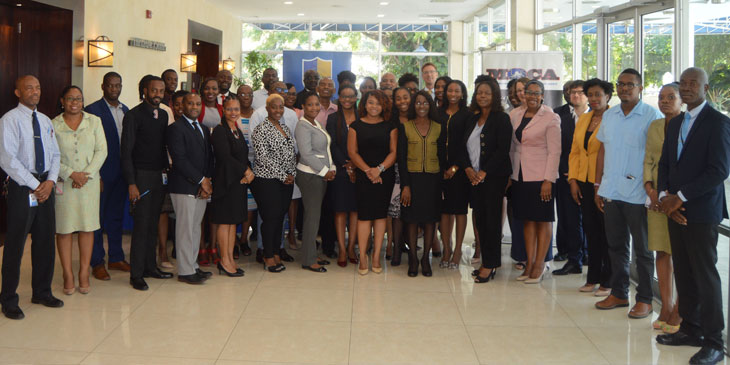Building public procurement integrity in Jamaica

Written by Elizabeth David-Barrett and originally published on the ACE-Global Integrity blog.
Public procurement is one of the key ways of corruptly channelling money out of the state, not least because it is one of the few areas of public spending in which there is significant discretion. That means that, in a well-functioning state, there will be many bodies with an interest in controlling and overseeing procurement. Yet it is surprisingly rare to see all the parties together in the same room, talking about how they can work together, as happened recently in an intense two-day workshop on analysing procurement data for integrity risks in Jamaica.
Our main partner, and co-organiser of the workshop, is the Integrity Commission of Jamaica. With a mandate to prevent, investigate, and prosecute corruption, one of the Integrity Commission’s core functions is to oversee public procurement. Moreover, it is because they – and one of their predecessor organisations, the Office of the Contractor General – have been collecting and publishing public procurement data since 2006, that we were able to select Jamaica as one of the countries of analysis in our GI-ACE research.
Jamaica was an obvious choice for our follow-on work, in which we are collaborating with the Integrity Commission to develop an online interface that will make it much easier to analyse procurement data. As well as having good data, there are a number of highly competent interested agencies in Jamaica, with various roles in overseeing contracting, and longstanding UK-DFID (Department for International Development) support for local agencies that work to fight grand corruption and organised crime.
The Integrity Commission expertly convened a group of potential users from a range of government agencies to attend the workshop. As well as their own investigators and monitors, and their data collection and analysis team, they invited several other organisations to the table. Over the two days, we learned about the many different ways in which analysis of procurement data could assist their work.
Instead of relying on a random sample, the Auditor General, for example, is interested in running a series of analyses of supplier risk, sectoral risk, and cost over-runs, as a preliminary risk assessment that would help them choose more selectively where to target their audit resources. Another government agency, meanwhile, is interested in matching up how much companies declare in income with the value of the contracts they have been awarded. Yet another wants to improve project implementation throughout the public procurement process.
The Public Procurement Commission, which is responsible for checking the credentials of companies that wish to register to participate in public tenders, is keen to develop a mechanism for evaluating contract performance. They also would like to identify conflicts of interest among public bodies and contractors, and create risk profiles for suppliers. Such information might inform their decisions to deny access to public contracts, or to downgrade or suspend the registration of suppliers.
Policymakers also are keen to build an evidence base that can inform future policy design, using the tool to compare competitive and non-competitive processes, assessing the impact of a change in thresholds, and to tracking efficiency in areas such as framework agreements.
Law enforcement agencies emphasise the generation of evidence about individual cases, which can include tracing conflicts of interest and gaining a sense of contract-level and supplier risk patterns.
There was huge enthusiasm in the room for developing a user-friendly tool to detect corruption in contracting. Our next step is to assess just how many of these needs we can meet in the online portal design. Much of that depends on the underlying data, but where we can’t immediately fulfill a need, we will be able to highlight areas where collecting more data could underpin enhanced analysis in the future.
The workshop has already had one big benefit: It helped create awareness and support networks among these varied agencies on how they can work together. One participant reported, “It was rewarding to get the different views on the challenges faced and the different suggestions and remedies; it also opened the gate for future collaboration,” while another commented, “The information from the other participants served to show the endless connections and the interconnectedness that can be achieved.”
Fighting corruption is partly about having the evidence base to design good policy, but it’s also about having the right teams in place to implement it.